NVIDIA GeForce Experience Update: 4K GameStream & 1080p Twitch; Driver Update Changes To Come
by Ryan Smith on October 15, 2015 9:00 AM EST- Posted in
- GPUs
- GeForce
- NVIDIA
- GeForce Experience
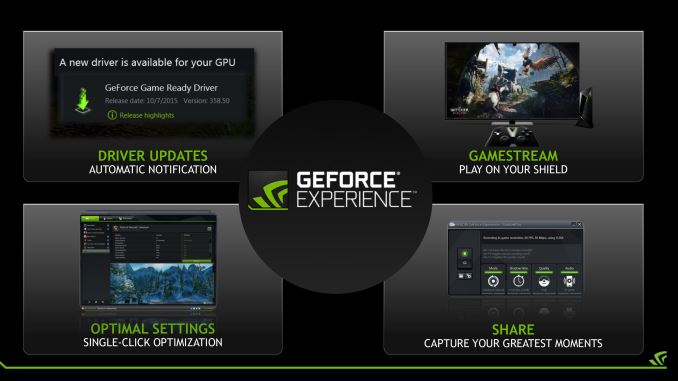
Since launching their GeForce Experience software utility over two years ago, NVIDIA has continued to iterate on it in a fairly regular fashion. Along with its software update and game settings optimization features, NVIDIA has added a number of features over the past couple of years tied to their NVENC hardware encoder, including GameStream, ShadowPlay, and most recently the beta for Share and GameStream Co-Op. As one might expect, NVIDIA is not stopping there, and in a briefing to the press this week, NVIDIA is announcing some of their feature development plans for GeForce Experience over the next couple of months.
To kick things off, in a new beta release hitting NVIDIA’s servers today, NVIDIA will be updating several of GeForce Experience’s various NVENC-powered features to enable new features. On the GameStream front NVIDIA will be offering new functionality specifically targeted at the recently launched SHIELD Android TV set top box. With the SHIELD Android TV capable of decoding 4K video content, NVIDA is now giving GameStream the ability to encode video at that resolution, allowing for GameStream remote gaming at full native resolution for 4K TVs. Furthermore NVIDIA is also giving GameStream the ability to serve up 5.1 audio.
Until this latest release GeForce Experience had been limited to serving up GameStream with 1080p video and stereo audio, so this marks a significant increase in GameStream’s video and audio quality. At the same time because of the step up in quality the system requirements to use the new 4K mode are significantly higher as well. On the encode side only the newest Maxwell 2 generation GPUs have an NVENC unit capable of encoding at 4Kp60, so high-end Kepler users won’t see this functionality. Meanwhile on the reception side, a SHIELD Android TV is needed to receive 4K video, and NVIDIA is recommending a hardwired 100Mbps (or better) Ethernet connection for best performance. And on a technical side note, though not specified in NVIDIA’s presentation, as 4K support is limited to SHIELD Android TV I’m curious whether NVIDIA is still using H.264 or if they’re switched to HEVC, as Maxwell 2 and SHIELD Android TV support hardware HEVC encoding and decoding respectively.
Moving on, similar to GameStream, GeForce Experience’s video broadcasting module is also getting new functionality and an image quality boost. First launched with Twitch support back in late 2013, the broadcast module is now gaining support for Google’s rival YouTube Live service as well, allowing GeForce users to broadcast to the service of their choice. Furthermore the broadcast module can now upload video streams at 1080p60 with a maximum bitrate of 9Mbps, supplanting the module’s previous 720p60 limit. As even older versions of NVENC have long been able to record at 1080p, this change primarily appears to be NVIDIA increasing their limits now that these services are better able to handle the high bitrates that go with 1080p streaming.
The Next Few Months: Driver Updates Shift to GeForce Experience
Finally, in their last announcement for the day, NVIDIA is sharing a bit of information on their plans for GeForce experience for the rest of the year, and this is a big one.
Starting with a December update to GeForce Experience, NVIDIA will be overhauling how they distribute their driver updates. The company currently posts new drivers on a regular basis to their website while also simultaneously pushing them out via GeForce Experience. Come December, that will be changing and GeForce Experience will be the preferred “first access” distribution mechanism for NVIDIA’s frequent driver updates.
This change comes on the heels of NVIDIA’s latest research, which finds that 90% of all driver updates are now distributed through GeForce Experience. At this point NVIDIA is not discussing the change in great detail – and most likely they’re still sorting out the finer details of what they want to do – but the basic idea is to fully exploit the push update mechanism of GeForce Experience while drawing users into what will in time become a larger NVIDIA ecosystem. GeForce Experience will be used to distribute the company’s regular “point release” driver updates that the company frequently releases and typically contain bug fixes and performance improvements for gamers – in other words the drivers most gamers will want to be on. Meanwhile NVIDIA will still post drivers to their website (and by extension Windows Update), but on a reduced quarterly cadence.
One thing NVIDIA has made clear is that they’re sticking with their overall Game Ready driver release system – targeting frequent driver updates to line up with major game launches – and this includes WHQL certification, so this won’t be NVIDIA cutting back on WHQL releases despite the fewer updates to their website. However even with WHQL certification, NVIDIA’s frequent driver releases (20 in just over the last year, not counting hotfixes) have been both a curse and a blessing for their wider user base, as non-gamers use the same drivers. I get the impression that this change is in part driven by a desire to establish separate “gamer” and “long term” driver release cadences where non-gamers aren’t constantly being bombarded by Game Ready point updates that primarily affect software they aren’t using.
At the same time however NVIDIA is also being straightforward about this driver change being part of a broader effort to promote GeForce Experience from a utility to a critical part of the GeForce ecosystem and to make it a software backend of sorts to their GPUs. The change in driver distribution will be accompanied by a yet to be fully detailed registration system where NVIDIA will be asking users to register their email addresses with GeForce Experience. NVIDIA has already been toying with this concept this year by using GeForce Experience to distribute game codes, so while it’s not fully clear what NVIDIA intends to do with a registered user base this is clearly the latest step as part of building their ecosystem.
More broadly speaking, NVIDIA has been pushing the larger GeForce ecosystem concept for even longer than GeForce Experience has been around – through G-Sync, PhysX, 3D Vision, and other technologies – and the company has made it clear for years that they see their continued success as coming from not just offering gamers solid hardware, but offering a wholly integrated experience. Given that PC gaming is otherwise one of the few bright spots in a tough market for PCs – year-over-year worldwide sales were down 7.7% for Q3 – it makes a great deal of sense for NVIDIA to want to further bolster their hand in the PC gaming market.
I am however curious to hear more details in the coming months about how the registration mechanism and revised driver distribution system works in GeForce Experience, what else NVIDIA will be doing with their growing ecosystem, and what GeForce owners think of this. Web based driver updates are older than the formal concept of the GPU, so NVIDIA’s plans mark a significant change in how drivers are at least preferably distributed. Though to NVIDIA’s credit they have clearly thought this through – even downgrading has been considered and NVIDIA will be building in a downgrade mechanism into the GeForce Experience driver update module. And ultimately with NVIDIA’s 90% distribution figure, it would appear that web downloads were already a quickly dying trend anyhow.
Wrapping things up, NVIDIA tells us these latest and upcoming improvements to GeForce Experience will be followed by further improvements for GeForce Experience in 2016. NVIDIA has stated that they have an “interesting roadmap” for the utility for the next year, one that will no doubt further flesh out this software ecosystem that the company is quickly assembling.


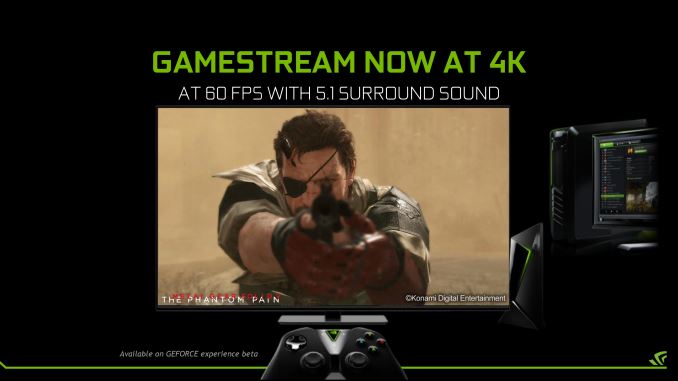
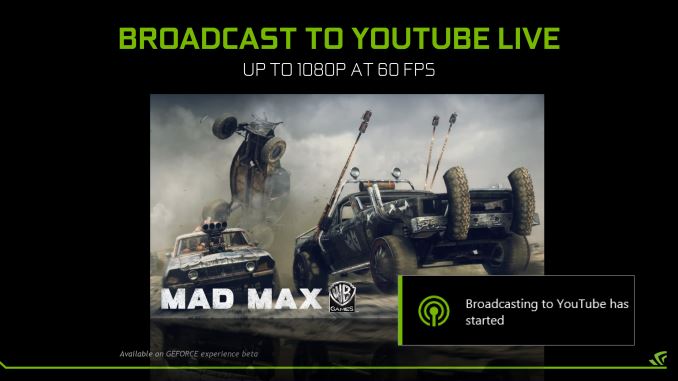
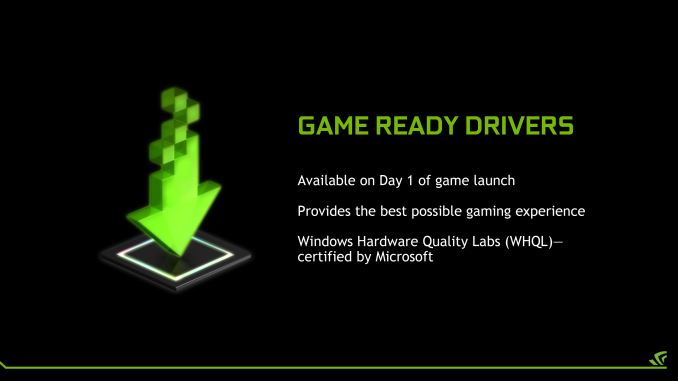
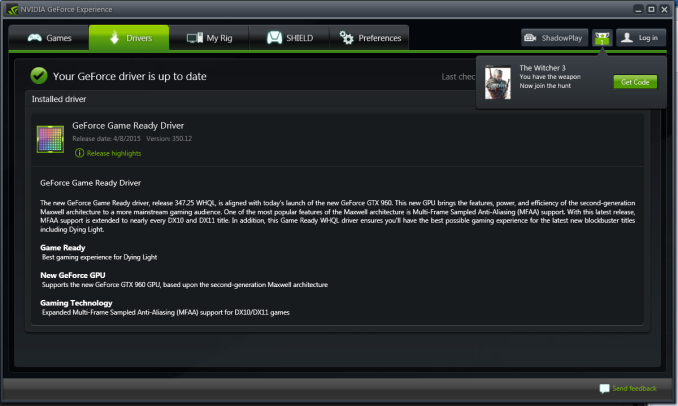








54 Comments
View All Comments
DParadoxx - Thursday, October 15, 2015 - link
GFE is bloatware an I won't be installing it. This is yet another reason I'm looking at moving back to AMD.D. Lister - Friday, October 16, 2015 - link
Ah yes, moving back to AMD, with their lovely "Gaming Evolved by Raptr" nonsense, which facilitates the selling of your personal information to the highest bidder, on top of being worse in every bloody way to the GFE. Well done.Azurael - Friday, October 16, 2015 - link
AMD Gaming Evolved isn't installed on my system, I've never registered with AMD and I can still get regular driver updates. What are you on about?eddman - Thursday, October 15, 2015 - link
I don't get it. What's so hard about posting drivers on their websites?I have no problem with them, offering drivers through GFE, but what's the reason for canning exe drivers?
They really need to explain this one.
Spectrophobic - Thursday, October 15, 2015 - link
I'm astounded how many people consider GFE bloatware considering AMD's Gaming Evolved is much much worse. From my time with GFE, I think it's more polished than even the CCC (I know different purposes, etc).hero4hire - Saturday, October 17, 2015 - link
It is bloatware. At best shovelware. Just because AMD does something worse is not relevent to the discussion. We should be opinionating about how we want software to act and not race to the bottom. I don't know if AMD is worse/ better or if Intel drivers solve world hunger. Let's focus on the matter at hand.I would love GFE as a default action. What I detest is the removal of the power user option. Let the masses have drivers pushed. No really, hood. But why can't you release the driver executables in a beta for in the manner that already works? And the reason I fear as the most likely is to data mine and vendor lock me in. And that pisses me off!
colonelclaw - Friday, October 16, 2015 - link
Seems to be a lot of hate for GFE here, so I will come to it's defense; I'm a big fan of the game optimisation part. On every game I've tested with it so far, it's provided me with 60fps and maximum eye candy possible without having to spend hours turning things on and off to see what difference it makes. I realise some people may enjoy this kind of trial-and-error troubleshooting, but it's not what I buy games for.Fiernaq - Friday, October 16, 2015 - link
Screw GFE. I don't need any of that bloat... err... "features".BrokenCrayons - Friday, October 16, 2015 - link
I've been unfortunately stuck using a desktop PC recently and it has a GeForce GT 730 in it, which is an okay graphics card, but it's not exactly a gaming monster. Since I play PC games only occasionally, the lower end performance isn't exactly a problem, but I did recently just accept the default settings for the driver install and got the whole GeForce Experience suite. The desktop is rarely connected to the internet since it hasn't got wireless and only once in a while do I take it over to my router to connect it for things like OS updates and whatnot. It was last weekend that I most recently did this and GeForce Experience software (something I've mostly been ignoring since I did the default driver install) fetched a new driver, asked to scan my computer (which took forever, but that might be the fault of my old 750GB hard drive being slow), and then recommended a bunch of settings changes to Fallout 3 that seemed sort of silly since it was running just fine the way I'd configured it. It offers a bunch of capabilities I don't need or would be willing to use, like live streaming since those things require getting in bed with Google and letting them have access to even more of my life than just tracking me through advertisements. It also failed to identify any game I installed via Steam, only finding Fallout 3 which is an ancient GOTY DVD-based install. I just don't see a point in it or letting it run continuously on my system, but I didn't really care overly much either way until the comments here pointed out that it's an optional component of the driver install. I think the next time I load a new GPU driver, I'll do so manually and go about removing the GeForce Experience.SuckItAnand - Friday, October 16, 2015 - link
Go ahead and uninstall the experience. Everybody, right away. Nvidia will soon reverse their stance.The reason they are really doing this is to get statistics on piracy. The GFE scans your computer looking for games and whatever else it seems fit, and reports this info back to Nvidia, as Nvidia are working closer with developers these days, they are in a good position to get information on pirate users habits, and possibly implement some sort of DRM in future, or even a way of tracking copyright infringers for sending nasty legal letters to.
GFE can be loaded with definitions of piracy workaround files, this and a database of registered users, cross-refferenced with digital distribution shops and their lists of bank account and therefore address holding customers, gives them a very tidy way of tracking people down.